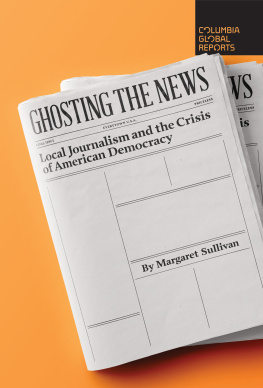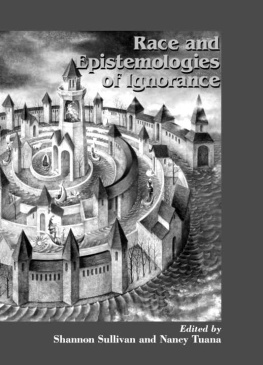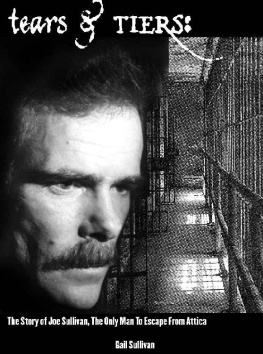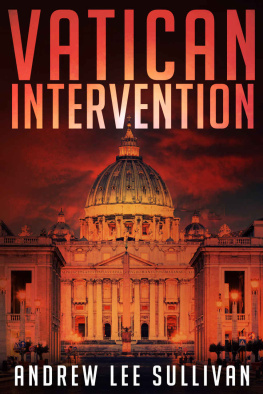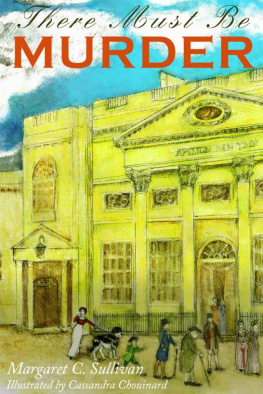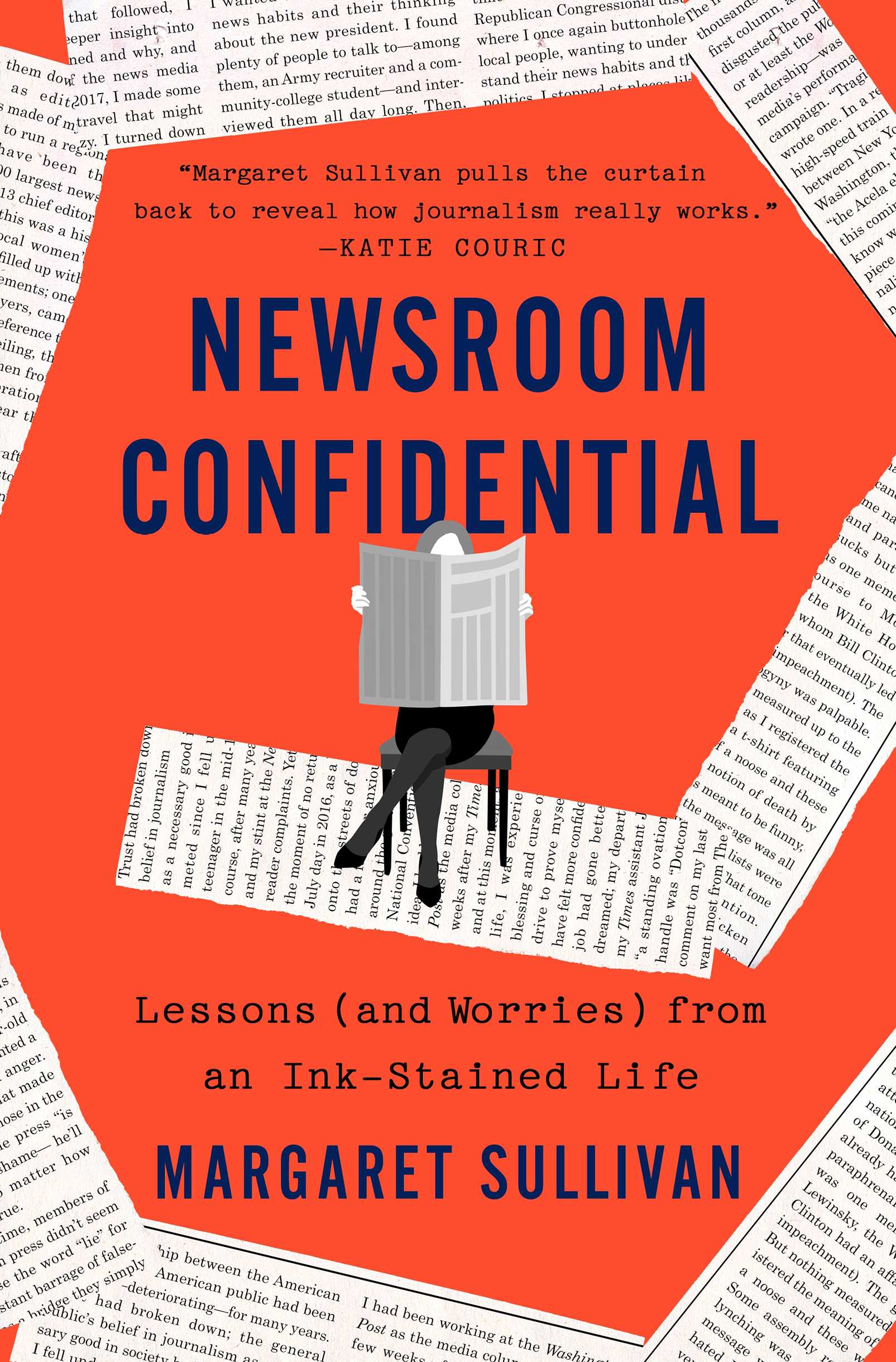Contents
Guide
Pagebreaks of the print version

The author and publisher have provided this e-book to you for your personal use only. You may not make this e-book publicly available in any way. Copyright infringement is against the law. If you believe the copy of this e-book you are reading infringes on the authors copyright, please notify the publisher at: us.macmillanusa.com/piracy.
In memory of my parents, Jack and Elaine Sullivan, with love and gratitude
Sections of this book describe my experiences at The New York Times and The Washington Post, where I was writing blog posts and columns at a rapid clip, sometimes as often as three or four times a week. I draw on those published pieces here, sometimes by directly quoting from them and sometimes by summarizing or paraphrasing. I also rely on the scores of journals I have kept for more than five decadesstarting at age ten, when my father handed me a blank 1968 datebook that I decided to use as a diary.
On January 6, 2021, the Covid pandemic was still raging, and amid the lockdown, it had been months since I had set foot in the Washington Post newsroom or covered a story in person. That once bustling D.C. newsroom was largely shuttered, along with the smaller New York City office where I often worked, and most of usreporters, editors, and columnistswere working from home. Like almost everyone else, I watched Donald Trumps Stop the Steal rally, and the horrifying riot at the Capitol that followed, on TV. What started out looking like just another raucous rally turned downright frightening as a violent mob stormed the barricades. Even though I was safe at home, I could easily imagine myself there because both the Ellipse, near the White House, and the Capitol were less than a mile from where I had lived as Trumps presidency began. And I know what I saw: one of the most appalling moments in all of American history. Unlike the attacks on 9/11, decades earlier, this was an attack from withinincited by a defeated president who demanded that his vice president, Mike Pence, do what should have been unthinkable in the worlds greatest democracy: reverse the results of a legitimate presidential election and give the loser an unearned second term.
The news coverage, of course, was wall-to-wall, even on Trumps favorite and most dependably supportive outlets, Fox News and One America News. You couldnt live in America and fail to understand what was happening. But it didnt take long for denialism to take hold. On that very day, at the pro-Trump network One America News, a supervisor reportedly ordered his staff to ignore the obvious: Please DO NOT say Trump Supporters Storm Capitol. DO NOT CALL IT A RIOT!!! By the spring, a Republican congressman would describe the violent attack as something that looked like a normal tourist visit. By October, even the former vice president was trying to sow doubt. The rioters may have been chanting Hang Mike Pence! and they may have erected a symbolic gallows, but when Sean Hannity interviewed Pence on Fox News, the vice president downplayed the insurrection as merely one day in January. He accused the mainstream media of giving it too much attention and of trying to demean Trump supporters.
This revisionism is working. As I write this, many months later, public opinion polls continue to reflect the nations ugly divide and the refusal of many Americans to accept reality. Most Republicans believeor say they believethat the election was stolen from Trump. They believe this despite the lack of evidence and against the outcome of every court challenge and every politicized audit of votes in states like Pennsylvania and Arizona. They believe it, in large part, because of the constant drumbeat from right-wing media: on Fox, on podcasts, on radio shows, all amplified enormously on social media, especially on Facebook.
The traditional mediawhat I call the reality-based presswas at fault, too, in creating this democracy-threatening mess. In a less obvious way, they worsened the harm. They did so by treating the denialists as legitimate news sources whose views, for the sake of objectivity and fairness, must be respectfully listened to and reflected in news stories. By inviting the members of Congresss insurrection caucus on the Sunday broadcast-TV talk shows week after week. By framing the consequential decisions being made in Congress, including Trumps second impeachment, as just another lap in the horse race of politics. Examples abounded. When House Speaker Nancy Pelosi, quite reasonably, refused to give seats on an investigative committee to two congressmen who had backed Trumps efforts to invalidate the election, many journalists framed it as a partisan feud, not as an effort to protect the integrity of the committee. Politico even called Pelosis necessary decision a gift to Kevin McCarthy, the Republican minority leader of the House of Representatives, again depicting the investigation as little but a political game, complete with winners and losers.
The extreme right wing had its staunch, all-in media allies; the rest of the country had a mainstream press that too often couldnt, or wouldnt, do their jobs. Too many journalists couldnt seem to grasp their crucial role in American democracy. Almost pathologically, they normalized the abnormal and sensationalized the mundane.
These days, we can clearly see the fallout from decades of declining public trust, the result, at least partly, of so many years of the press being undermined and of undermining itself. What is that fallout? Americans no longer share a common basis of reality. Thats dangerous because American democracy, government by the people, simply cant function this way. Its high time to ask how public trust in the press steadily plummeted from the years following the Watergate scandal and the publication of the Pentagon Papers in the 1970swhen seven of ten Americans trusted the newsto todays rock-bottom lows.
For me, this story of lost trust is personal. I was drawn into journalism as a teenager, partly by the intrepid and history-changing Watergate reporting at The Washington Post. Soon after, I became the editor of my high schools student newspaper. After part-time clerking jobs and reporting for college newspapers, my career began for real. Over more than four decades, Ive worked at news outlets as tiny as the Niagara Gazette, with its handful of reporters covering a small Western New York city, and as large as The New York Times, with nearly two thousand journalists posted all over the world.
As a young reporter, I nearly choked on the smoke and fumes as I covered a propane explosion in downtown Buffalo that took the lives of five firefighters and two civilians. Years later, as the newly minted chief editor of my hometown Buffalo News, I raced up to a standing microphone in a packed Washington, D.C., hotel ballroom and asked President Clinton a question that infuriated him; his answer made front-page news all over the country.
On September 11, 2001, I approved the 120-point headline on an emergency extra edition of the News that hit Buffalos streets just hours after the terrorist attack in our state. As the public editor of The New York Times, I watched from a balcony overlooking the vast newsroom as publisher Arthur Sulzberger stunned the gathered staff by announcing that he had summarily replaced the papers first woman editor, Jill Abramson, with its first Black editor, Dean Baquet.



